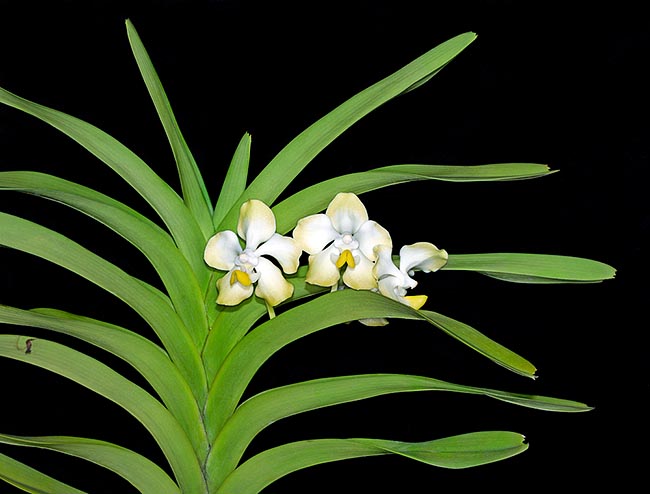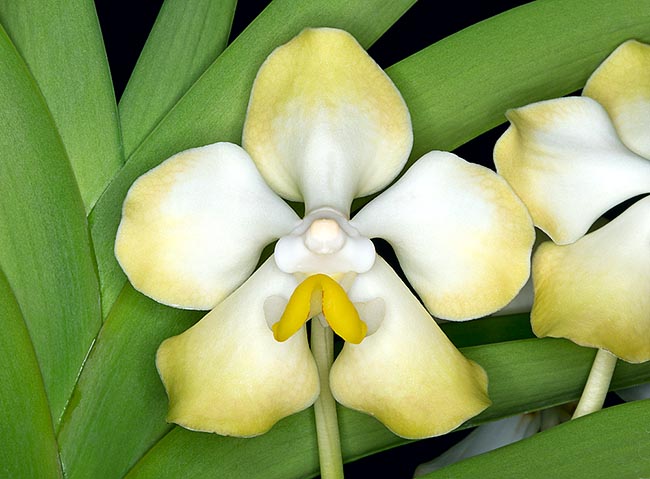Family : Orchidaceae

Text © Pietro Puccio

English translation by Mario Beltramini

Increasingly rare in nature, Vanda dearei is an epiphyte of Borneo and Lesser Sunda Islands © Giuseppe Mazza
The name of the genus is that in Sanskrit of the Vanda tessellata; the species was honoured by H.G. Reichenbach to the English colonel Deare, collector of orchids, who had picked it up in the Sunda Islands.
Common names: Deare’s vanda (English).
The Vanda dearei Rchb.f. (1886) is a monopodial epiphytic species with erect stem, that can exceed the metre of height, hidden by the imbricate foliar bases.
The leaves are alternate, distichous, coriaceous, nastriform, irregularly bidentate at the apex, curved, 20-35 cm long and 2,5-3,5 cm broad, of pale green colour.
Axillary racemose inflorescences on short peduncle carrying 3-6 fleshy flowers, up to about 8 cm of diametre, cream white shaded of pale yellow with golden yellow labellum. Sepals and petals similar shortly unguiculate (with the narrow base similar to a stem), about 4 cm long and 3 cm broad, trilobed labellum about 4 cm long and 4,5 cm broad.
The flowers are long lasting, about 2 weeks, and emit an intense sweet scent. It reproduces by seed, in vitro, and micropropagation.

The inflorescences have 3-6 even 8 cm broad much perfumed flowers. Little cultivated but with numerous hybrids © Giuseppe Mazza
It requires high luminosity, also some hours of direct sunlight in the morning, high daily temperatures in all seasons, 25-34 °C, with minimum night tempe- ratures in winter not under the 18 °C, high humidity, 70-85%, along with a constant ventilation.
The waterings must be frequent and abundant, even daily in particular for the mounted plants in presence of high temperatures, more spaced in winter with lower temperatures, avoiding stagnations, using rainwater, deminera- lized or by reverse osmosis. Beweekly fertilizations in summer, monthly in winter, utilizing a preferably balanced product, with microelements, at half the dosage suggested by the producer. It can be mounted on branches, bark, rafts of cork or of arborescent ferns or cultivated in well drained pots or preferably in baskets, in way to allow the roots to freely elongate and to quickly dry up after the waterings and the nebulizations, using an aerated compost that may be formed by medium-large sliced bark fragments and charcoal. The roots do not love to be disturbed, therefore the repottings are to be done when strictly necessary, by the vegetative restart.
The species is reported in the appendix II of the CITES (species whose trade is internationally ruled).
→ For general notions about ORCHIDACEAE please click here.
